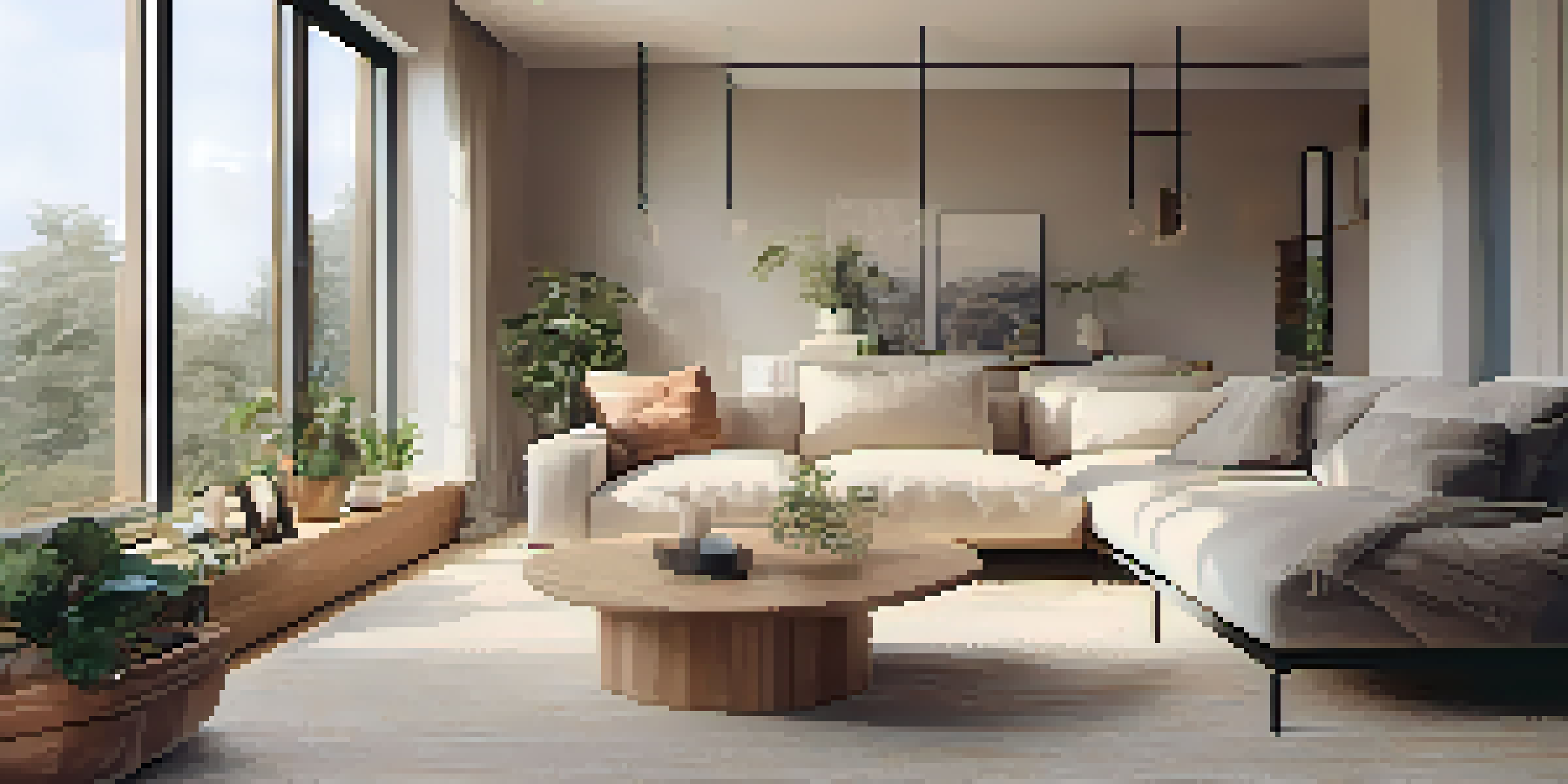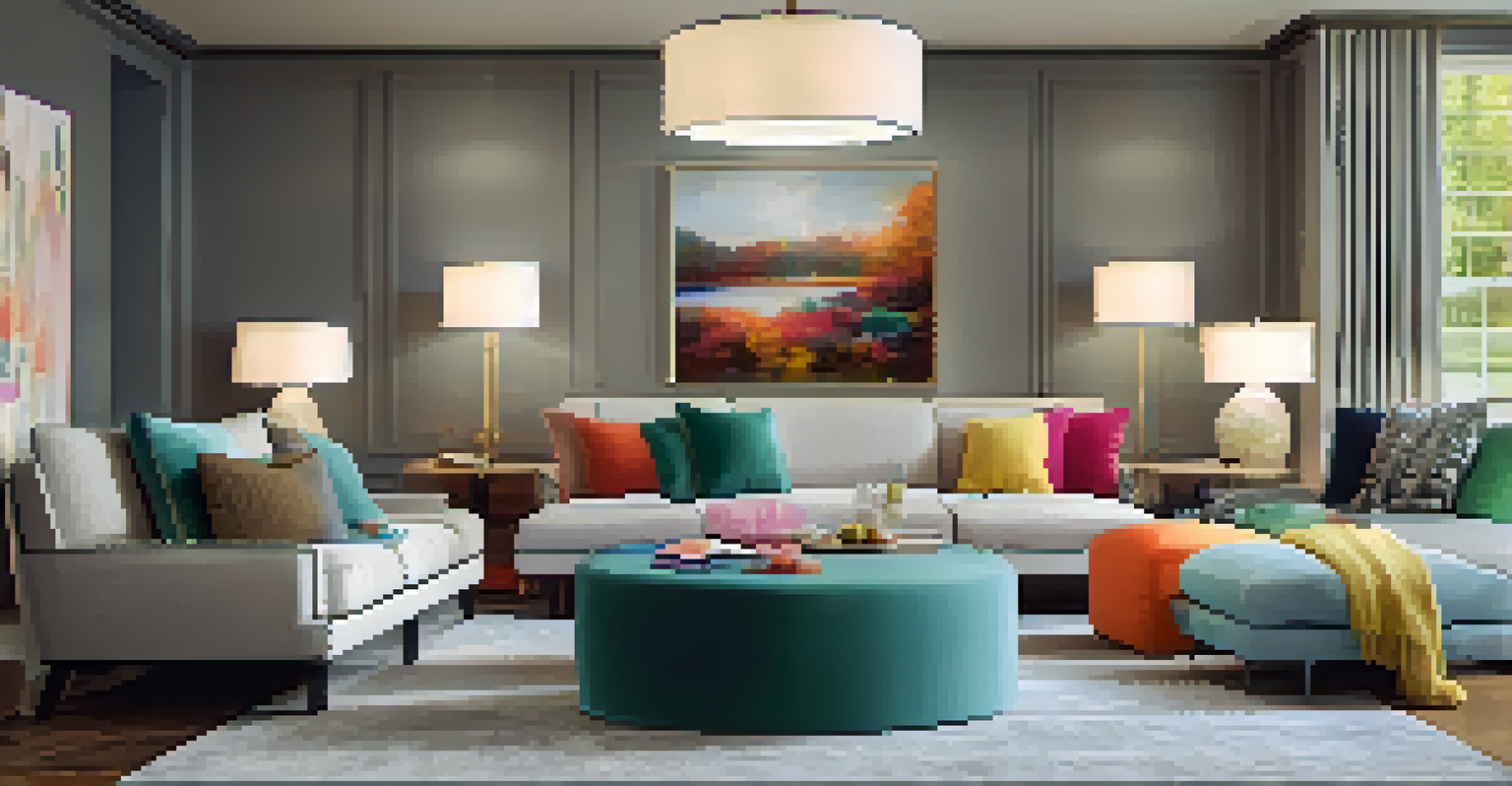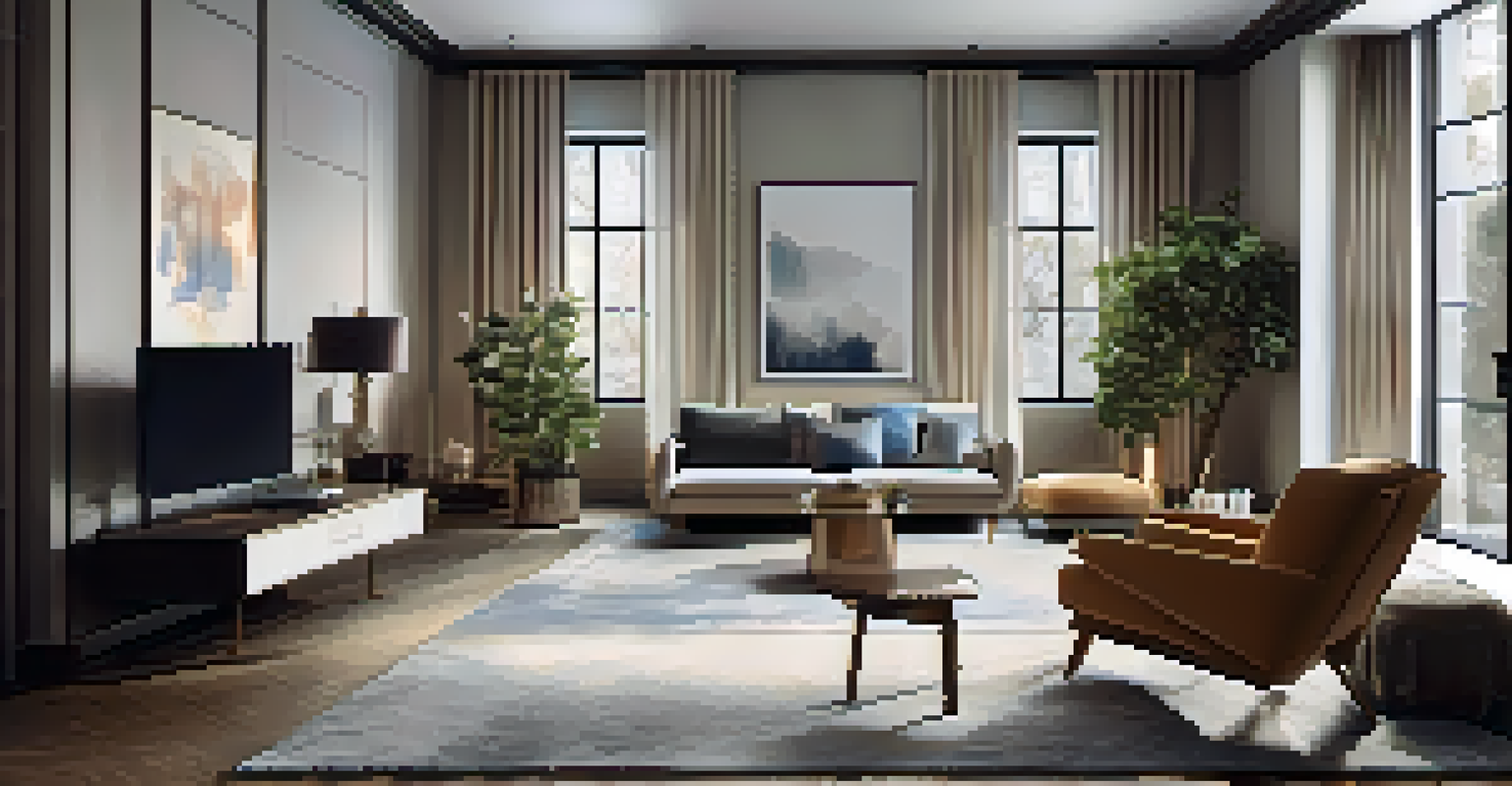Tips for Accessible Furniture Placement in Living Rooms

Understanding Accessible Design for Living Rooms
Accessible design ensures that everyone, regardless of mobility, can comfortably navigate a space. This is crucial in living rooms, where people gather to relax and socialize. By prioritizing accessibility, you create an inviting atmosphere that accommodates all guests and family members.
Accessibility allows us to tap into our full potential as a society.
Think of your living room as a hub of activity. It’s where we entertain, unwind, and connect with others. Therefore, considering accessibility in your furniture placement can make a significant difference in how enjoyable these interactions are for everyone involved.
Ultimately, accessible design is about creating a harmonious environment that caters to the needs of all individuals. When done thoughtfully, it enhances both the functionality and aesthetic appeal of your living room.
Measuring Space for Optimal Furniture Placement
Before arranging your furniture, measuring the space is essential. This step helps you understand the dimensions of your living room and allows you to plan an arrangement that ensures easy movement. For instance, aim for at least 24 inches of clear space for pathways, which can accommodate wheelchairs or strollers.

Visualize your layout by sketching it out or using an online room planner. This can help you see how different furniture pieces will fit together and where they might block pathways. Remember, a well-measured space can prevent overcrowding and promote a more inviting atmosphere.
Prioritize Accessibility in Design
Creating an accessible living room ensures that everyone can comfortably navigate and enjoy the space.
By establishing a solid foundation with accurate measurements, you set the stage for a functional and accessible living room. This approach allows for free-flowing movement and encourages everyone to engage comfortably.
Choosing the Right Furniture for Accessibility
Selecting furniture that prioritizes accessibility is key to a welcoming space. Look for items with rounded edges to prevent injuries, and opt for chairs and sofas with armrests to assist individuals when sitting down or standing up. These small details can significantly enhance comfort and safety.
Design is not just what it looks like and feels like. Design is how it works.
Consider the height of your furniture as well. Low seating can be a challenge for those with mobility issues, while higher options make it easier to get up and down. Adjustable furniture can also be a great solution, accommodating various needs and preferences within your household.
Ultimately, choosing the right furniture is about finding a balance between style and functionality. When you prioritize accessibility, you not only enhance usability but also ensure that your living room reflects your values of inclusivity and care.
Arranging Furniture for Clear Pathways
When arranging furniture, aim to create clear pathways that allow for easy navigation. This means positioning larger pieces, like sofas and tables, away from entryways and high-traffic areas. A well-thought-out layout can prevent congestion, making movement smoother for everyone.
For example, consider placing the coffee table at least 18 inches away from the sofa. This creates ample room for individuals to walk around without feeling cramped. Additionally, aligning furniture parallel to walls can open up central areas, promoting a more spacious feel.
Measure for Optimal Furniture Layout
Accurate measurements are essential for arranging furniture to promote easy movement and prevent overcrowding.
By prioritizing clear pathways, you create a living room that feels open and inviting. This thoughtful arrangement encourages social interactions and makes it easy for everyone to enjoy the space.
Incorporating Flexible Seating Options
Flexible seating options can significantly enhance accessibility in your living room. Consider using ottomans, bean bags, or modular furniture that can be easily moved around. This adaptability allows you to rearrange seating as needed, accommodating different gatherings and guests.
Moreover, having a variety of seating heights can be beneficial for individuals with different mobility levels. For instance, lower seating options can be inviting for children, while higher seating can be more comfortable for seniors. This diversity ensures everyone has a comfortable spot to relax.
Ultimately, flexible seating not only promotes accessibility but also adds a playful element to your living room. It encourages creativity in how you host and interact with family and friends.
Using Lighting to Enhance Accessibility
Proper lighting plays a crucial role in creating an accessible environment. Ensure that your living room is well-lit, particularly in areas where people will be moving around. Consider using a combination of overhead lighting, floor lamps, and table lamps to achieve a warm and inviting atmosphere.
Incorporating adjustable lighting options can also be beneficial. Dimmers allow you to tailor brightness levels based on the time of day or activity, making the space more comfortable for everyone. This flexibility is especially helpful for those with visual impairments.
Flexible Seating Enhances Comfort
Incorporating various seating options allows for adaptability and accommodates guests with different mobility needs.
Ultimately, effective lighting not only enhances accessibility but also adds to the ambiance of your living room. When thoughtfully integrated, good lighting can make the space feel more welcoming and safer for all.
Adding Personal Touches While Maintaining Accessibility
Personalizing your living room is essential to making it feel like home, but it’s equally important to maintain accessibility. Decorate with items that reflect your style while ensuring they don’t obstruct pathways or seating areas. For example, avoid placing large decorative pieces in high-traffic zones.
Instead, think about incorporating personal touches that are functional. A beautiful basket for storing blankets can enhance your decor while keeping the space organized and accessible. This balance between aesthetics and functionality creates a more enjoyable environment.

Ultimately, adding personal touches should enhance the space, not hinder accessibility. By thoughtfully curating your decor, you can create a living room that is both stylish and welcoming.